FAK is required for Schwann cell spreading on immature basal lamina to coordinate the radial sorting of peripheral axons with myelination
- PMID: 25274820
- PMCID: PMC4180476
- DOI: 10.1523/JNEUROSCI.1764-14.2014
FAK is required for Schwann cell spreading on immature basal lamina to coordinate the radial sorting of peripheral axons with myelination
Abstract
Without Focal Adhesion Kinase (FAK), developing murine Schwann cells (SCs) proliferate poorly, sort axons inefficiently, and cannot myelinate peripheral nerves. Here we show that FAK is required for the development of SCs when their basal lamina (BL) is fragmentary, but not when it is mature in vivo. Mutant SCs fail to spread on fragmentary BL during development in vivo, and this is phenocopied by SCs lacking functional FAK on low laminin (LN) in vitro. Furthermore, SCs without functional FAK initiate differentiation prematurely, both in vivo and in vitro. In contrast to their behavior on high levels of LN, SCs lacking functional FAK grown on low LN display reduced spreading, proliferation, and indicators of contractility (i.e., stress fibers, arcs, and focal adhesions) and are primed to differentiate. Growth of SCs lacking functional FAK on increasing LN concentrations in vitro revealed that differentiation is not regulated by G1 arrest but rather by cell spreading and the level of contractile actomyosin. The importance of FAK as a critical regulator of the specific response of developing SCs to fragmentary BL was supported by the ability of adult FAK mutant SCs to remyelinate demyelinated adult nerves on mature BL in vivo. We conclude that FAK promotes the spreading and actomyosin contractility of immature SCs on fragmentary BL, thus maintaining their proliferation, and preventing differentiation until they reach high density, thereby promoting radial sorting. Hence, FAK has a critical role in the response of SCs to limiting BL by promoting proliferation and preventing premature SC differentiation.
Keywords: FAK; Schwann cell; basal lamina; myelination.
Copyright © 2014 the authors 0270-6474/14/3413422-13$15.00/0.
Figures
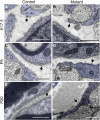
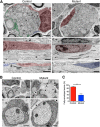
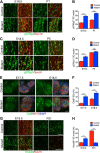



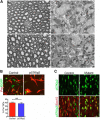
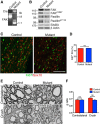
References
-
- Beggs HE, Schahin-Reed D, Zang K, Goebbels S, Nave KA, Gorski J, Jones KR, Sretavan D, Reichardt LF. FAK deficiency in cells contributing to the basal lamina results in cortical abnormalities resembling congenital muscular dystrophies. Neuron. 2003;40:501–514. doi: 10.1016/S0896-6273(03)00666-4. - DOI - PMC - PubMed
-
- Blanchard AD, Sinanan A, Parmantier E, Zwart R, Broos L, Meijer D, Meier C, Jessen KR, Mirsky R. Oct-6 (SCIP/Tst-1) is expressed in Schwann cell precursors, embryonic Schwann cells, and postnatal myelinating Schwann cells: comparison with Oct-1, Krox-20, and Pax-3. J Neurosci Res. 1996;46:630–640. doi: 10.1002/(SICI)1097-4547(19961201)46:5<630::AID-JNR11>3.0.CO%3B2-0. - DOI - PubMed
Publication types
MeSH terms
Substances
Grants and funding
LinkOut - more resources
Full Text Sources
Other Literature Sources
